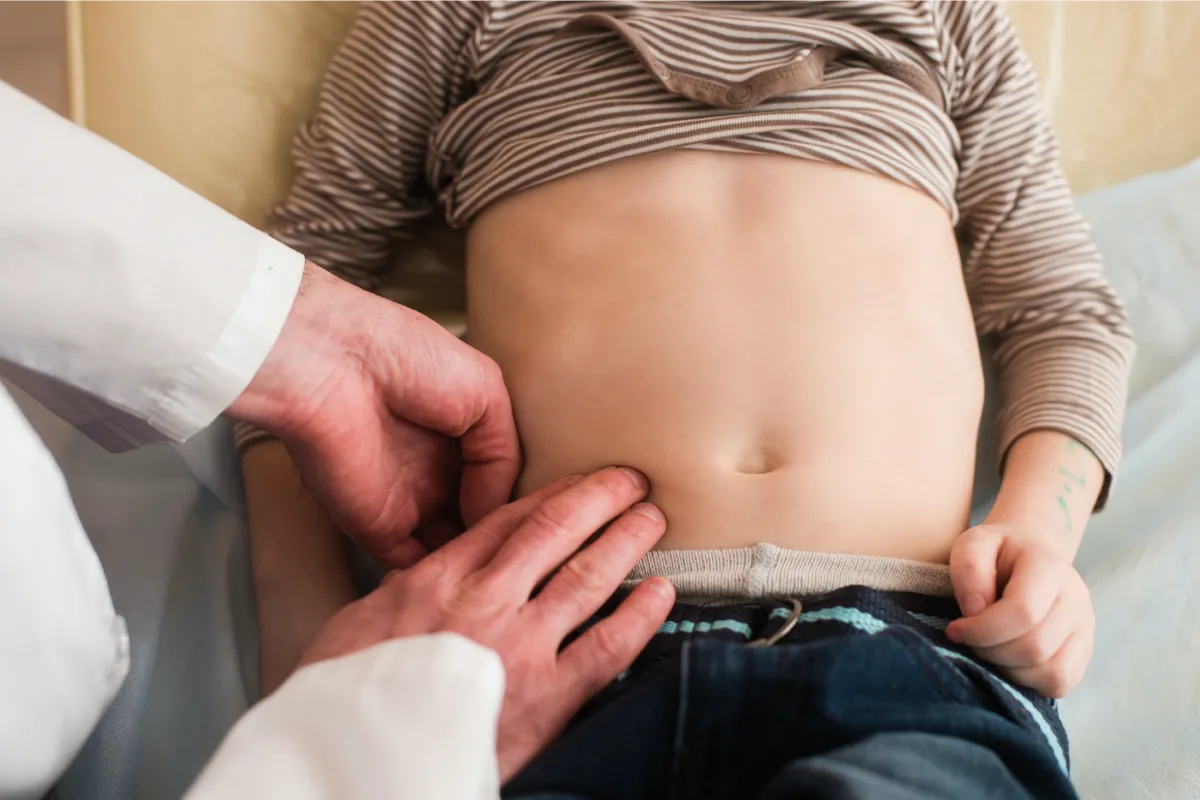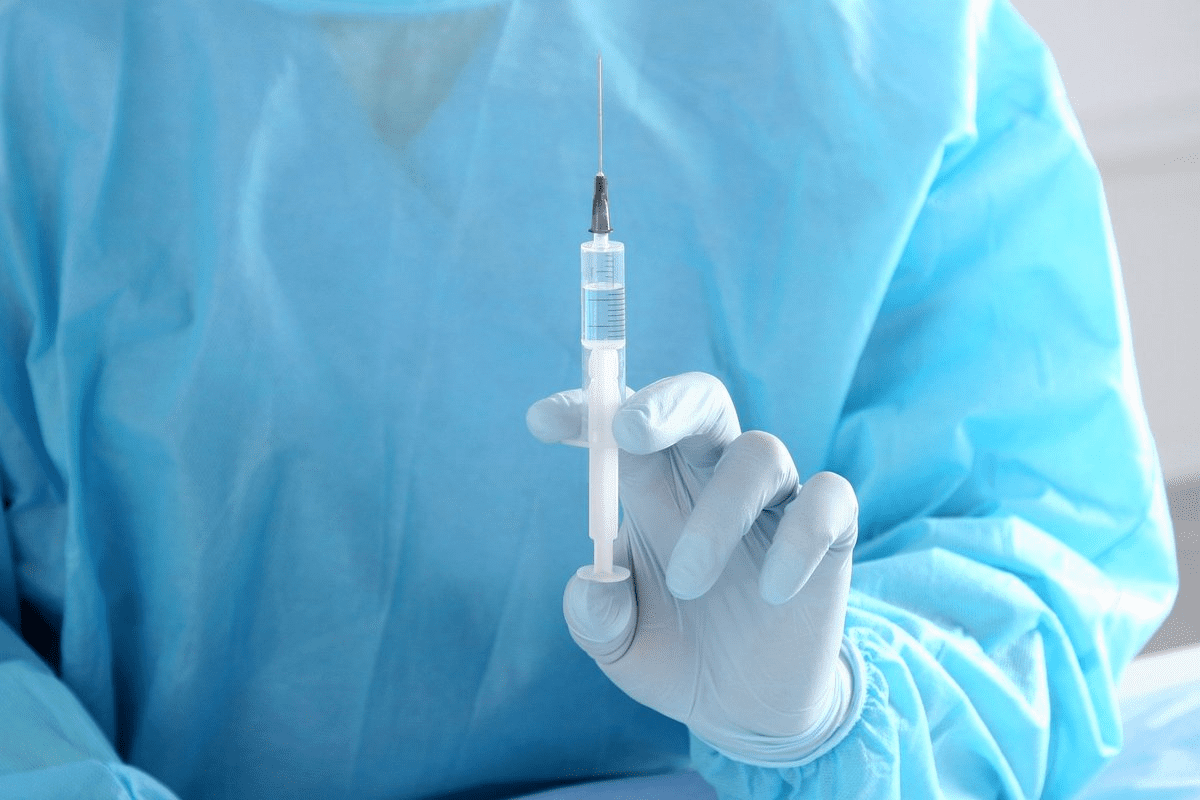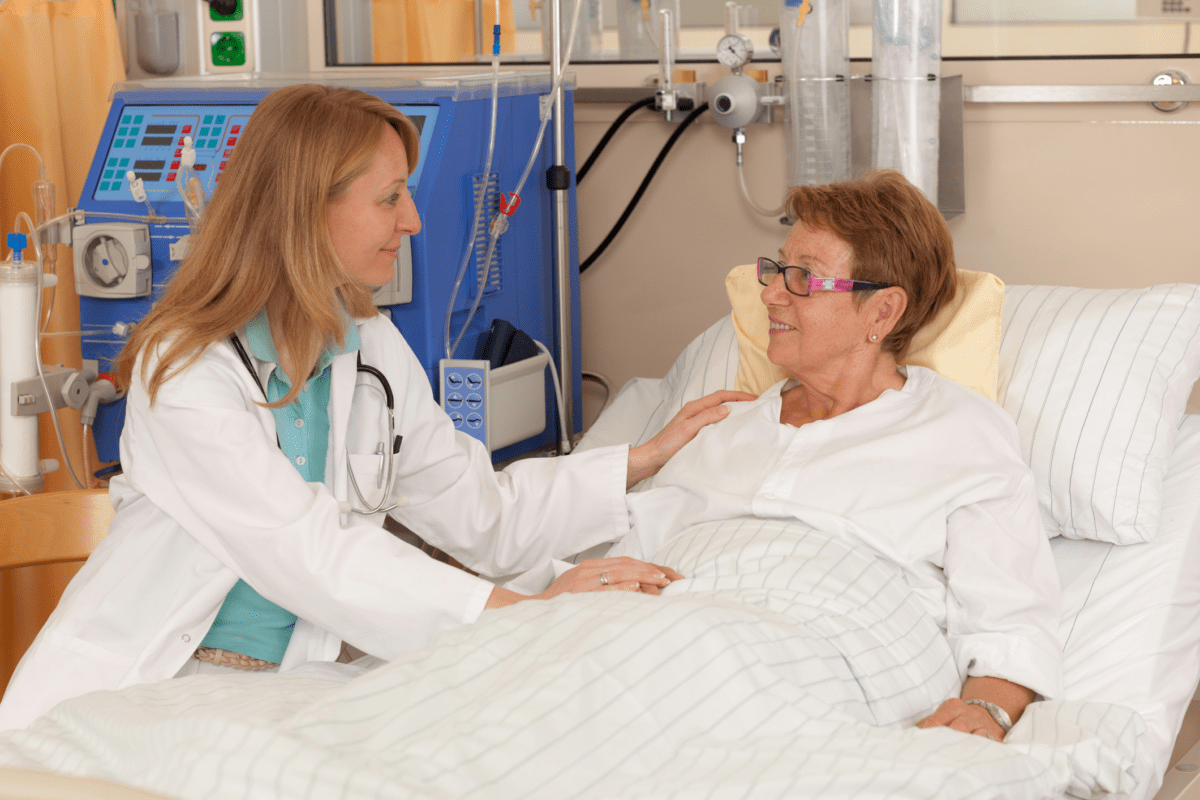Last Updated on November 27, 2025 by Bilal Hasdemir
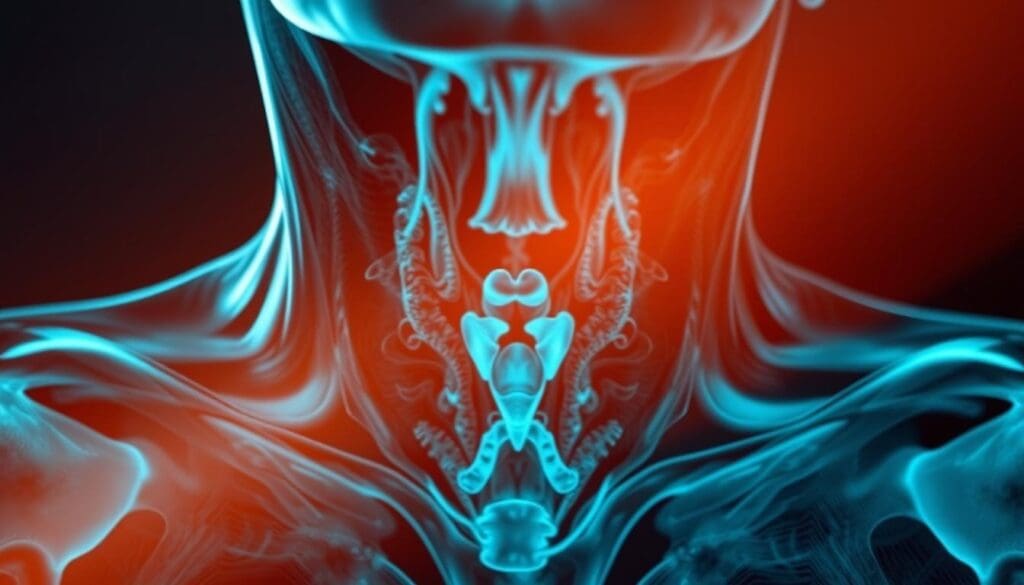
Knowing how CT scans help with thyroid evaluation is key. They show the thyroid’s shape and find any problems. A thyroid CT scan spots lumps, nodules, or cysts. It also tells if these are normal or not.
But it’s important to think about the radiation risks from CT scans. This is true for kids and women, as a study by Smith-Bindman et al. shows. The American Cancer Society notes that more thyroid cancers are found because of more CT scans.
Key Takeaways
- CT scans are important for checking the thyroid and finding issues.
- Radiation from CT scans is a big worry, mainly for kids and women.
- Thyroid CT scans find lumps, nodules, or cysts.
- More thyroid cancers are found because of more CT scans.
- It’s vital to know the risks and benefits of CT scans to make good choices.
Understanding the Basics of CT Scan Thyroid
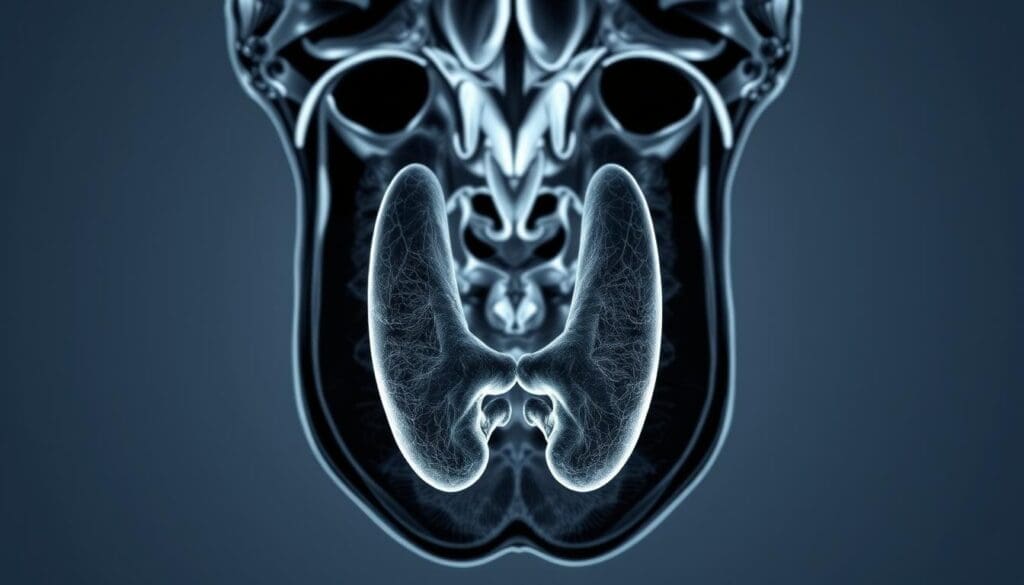
CT scans give a detailed look at the thyroid gland. They help find thyroid problems. This part will cover the basics of thyroid CT scans and the tech behind them.
What is a Thyroid CT Scan?
A Thyroid CT scan is a test that shows detailed pictures of the thyroid gland. It uses X-rays from different angles to make these images. This tool is key for checking the thyroid’s size, shape, and any problems like nodules or tumors.
How CT Imaging Technology Works for Thyroid Evaluation
CT imaging technology uses a scanner that moves around the body. It takes X-ray images from many angles. Then, it makes detailed pictures of the thyroid gland. This whole process is fast and doesn’t hurt, taking just a few minutes. The images help doctors diagnose thyroid issues and plan treatments.
| Feature | Description | Benefit |
| Detailed Imaging | Produces high-resolution images of the thyroid gland | Aids in the accurate diagnosis of thyroid conditions |
| Quick Procedure | Typically takes a few minutes to complete | Reduces discomfort and anxiety for patients |
| Comprehensive Evaluation | Assesses the size, shape, and structure of the thyroid gland | Helps in detecting abnormalities and planning treatment |
Knowing how CT scans work helps both patients and doctors. It aids in making smart choices about tests and treatments.
When is a CT Scan of the Thyroid Necessary?
A thyroid CT scan is needed in many cases where other tests don’t give clear results. It shows detailed images of the thyroid gland and nearby areas.
Clinical Indications for Thyroid CT
Here are some reasons you might need a thyroid CT scan:
- Detection and evaluation of thyroid nodules or masses
- Assessment of thyroid gland enlargement or goiter
- Investigation of thyroiditis or inflammatory conditions
- Evaluation of suspected thyroid malignancy or metastasis
- Preoperative planning for thyroid surgery
A study by Kim D et al. found that CT scans help find thyroid incidentalomas. This shows how important CT scans are for thyroid checks.
Limitations of Other Imaging Modalities
Ultrasound is often used for thyroid checks, but CT scans have their own benefits. They can see thyroid goiters that extend below the chest and check for tracheal or esophageal pressure. CT scans also spot lymph node swelling or cancer spread in the neck.
In short, a CT scan of the thyroid is key when dealing with complex thyroid issues or when detailed images are needed for making treatment plans.
CT Scan vs. Ultrasound for Thyroid Assessment
When we talk about checking thyroid health, we often look at CT scans and ultrasounds. Each has its own good points and not-so-good points. This makes them right for different situations.
Comparative Advantages and Disadvantages
Ultrasound is usually the first choice for thyroid checks. It’s non-invasive, doesn’t use radiation, and shows images in real-time. Bu, it might not work as well for people with a bigger body mass index (BMI). It also struggles when the thyroid gland is below the sternum.
CT scans give detailed pictures of the thyroid gland and what’s around it. They’re great for looking at thyroid anatomy and finding nodules or masses.
| Imaging Modality | Advantages | Disadvantages |
| Ultrasound | Non-invasive, no radiation, real-time imaging | Limited by operator skill, poor visualization in larger patients |
| CT Scan | Detailed cross-sectional images, useful for the substernal thyroid | Involves radiation, may require contrast |
When CT is Preferred Over Ultrasound
CT scans are better when you need a close look at the thyroid gland and what’s nearby. This is true for suspected thyroid cancer or when the thyroid is below the sternum. They’re also good for people for where ultrasound doesn’t work well because of their body shape or other reasons.
The Process of Getting a Thyroid Gland CT Scan
Getting ready for a thyroid gland CT scan is key to getting good results. There are a few important steps to know. These steps help make the process smooth and successful.
Patient Preparation Requirements
Before a CT scan of the thyroid gland, remove metal items like jewelry or glasses. These can get in the way of the scan. Your healthcare provider will give you specific instructions. This might include fasting or avoiding certain medicines.
It’s important to tell your healthcare team about any allergies, like to contrast dye. Also, let them know about any medical conditions, like kidney disease.
What to Expect During the Procedure
During the thyroid CT scan, you’ll lie on a table that moves into a big, doughnut-shaped CT scanner. The scan is quick, taking just a few minutes. The CT scan procedure is usually painless, but some might feel a bit uncomfortable.
This could be because of staying very quiet or from the contrast dye. The healthcare team will help you and answer any questions you have.
Normal Thyroid CT Scan Appearance and Anatomy
CT scans give a detailed look at the thyroid gland. They help spot normal structures. The thyroid gland is shaped like a butterfly and sits in the neck, around the trachea. On a CT scan, it looks like a solid, high-density area compared to muscles.
Identifying Normal Thyroid Structures on CT
The thyroid gland on a CT scan has symmetrical lobes and an isthmus. Its density is higher than neck muscles because of iodine. Normal thyroid tissue usually has a density of around 80-100 Hounsfield Units (HU). This is much higher than most soft tissues.
Density and Size Parameters in Healthy Thyroid Tissue
In healthy people, the thyroid gland’s size and density follow certain rules. The gland’s volume and lobe sizes can vary. But,there are criteria for what’s considered normal.
The thyroid lobes should be roughly the same size. The gland should not have nodules or cysts t, hat could mean disease.
Knowing these normal values is key for doctors and radiologists. It helps them check thyroid health and spot any problems on CT scans.
CT Scan With Contrast Thyroid: Enhanced Visualization
Contrast-enhanced CT scans give a clearer view of the thyroid and any possible issues. This clear view is key to making accurate diagnoses and plans for treatment.
Benefits of Contrast Enhancement
Using contrast in thyroid CT scans has many advantages. It helps in:
- Showing thyroid nodules and cysts more clearly
- Detailing the thyroid’s anatomy better
- Finding thyroid cancers more easily
Contrast enhancement is great for seeing how thyroid disease affects nearby areas.
Potential Risks and Contraindications
Even though contrast-enhanced CT scans are helpful, they can also pose risks. Possible problems include:
- Allergic reactions to the contrast agent
- Kidney damage, mainly in those with kidney problems
It’s important to think about these risks and the benefits. Also, consider other imaging options when needed. People with allergies or kidney issues should talk to their doctor before getting a contrast-enhanced CT scan.
In summary, contrast enhancement in thyroid CT scans is a strong tool for diagnosis. It provides better views of the thyroid. But it’s important to choose patients carefully and prepare them well to avoid complications.
Detecting Hypodense Thyroid Nodules on CT Scan
CT scans are key in spotting hypodense thyroid nodules. These nodules hint at several thyroid issues. Accurate detection is vital for diagnosis and treatment.
Characteristics and Classification of Thyroid Nodules
Thyroid nodules on CT scans differ in density, size, and shape. Hypodense nodules are less dense than the thyroid tissue. Their classification helps figure out if they’re likely benign or cancerous.
Differentiating Benign vs. Suspicious Nodules
Telling benign from suspicious thyroid nodules is key. Size, calcifications, and density give hints. The table below outlines how to tell them apart.
| Feature | Benign Nodules | Suspicious Nodules |
| Density | Often isodense or hypodense | May be hypodense with irregular margins |
| Size | Variable, often smaller | Often larger, >1 cm |
| Margins | Typically smooth | May be irregular or infiltrative |
| Calcifications | Rarely present | May be present, especially microcalcifications |
Knowing these traits and using CT scans well helps spot hypodense thyroid nodules. This guides the right treatment.
Identifying Thyroid Cysts Through CT Imaging
CT imaging is great for spotting thyroid cysts. It shows the thyroid gland’s details clearly. This helps find cysts in the gland.
Appearance of Thyroid Cysts on CT Scan
Thyroid cysts look like fluid-filled spots on a CT scan. They are hypodense, which means they’re darker than the gland. The cyst’s density can change based on what’s inside, like protein or blood.
Clinical Significance of Cystic Findings
Thyroid cysts found on CT scans can mean different things. Most are harmless, but some might affect thyroid function. The cyst’s size and the patient’s health are key to figuring out what to do next.
At times, more tests like fine-needle aspiration are needed. They help understand the cyst better.
Abnormal Thyroid CT Scan Findings and Their Implications
When a thyroid CT scan shows abnormal results, it often indicates thyroid issues that need further investigation. These findings can range from benign nodules to malignant tumors. Understanding these findings is key to proper diagnosis and treatment.
Common Pathological Findings
Thyroid CT scans can reveal various pathological conditions. These include thyroid nodules, goiter, and thyroiditis. Thyroid nodules are common and can be either benign or malignant.
The characteristics of these nodules, such as their size, density, and enhancement patterns on CT, provide valuable information for diagnosis.
When Further Investigation is Warranted
Further investigation is often necessary when abnormal findings are detected on a thyroid CT scan. This may involve additional imaging studies, such as ultrasound or PET scans, as well as biopsy procedures. The decision to proceed with further investigation depends on the specific characteristics of the findings and the patient’s overall clinical context.
In conclusion, abnormal thyroid CT scan findings have significant implications for patient care. By understanding the common pathological findings and knowing when further investigation is warranted, healthcare providers can make informed decisions about the next steps in diagnosis and treatment.
Radiation Exposure and Safety Considerations
CT scans for thyroid imaging bring up important safety questions. They offer valuable info on thyroid conditions, but involve radiation. This raises csafety concerns
Understanding Radiation Dose in Thyroid CT
The dose of radiation from a CT scan is key to understanding risks. Research shows that kids and women face higher cancer risks from radiation. This is a big concern.
A typical thyroid CT scan’s radiation dose is between 1 to 5 millisieverts (mSv). This is less than the yearly background radiation of about 3 mSv.
Minimizing Risks While Maintaining Diagnostic Quality
To lower radiation risks without losing diagnostic quality, several steps can be taken:
| Strategy | Description | Benefit |
| Optimizing Scan Protocols | Adjusting scanner settings to use the lowest necessary dose. | Reduces radiation exposure. |
| Using Alternative Imaging | Consider ultrasound or MRI when possible. | Avoids ionizing radiation. |
| Shielding | Using protective shields to minimize exposure to sensitive areas. | Protects surrounding tissues. |
Healthcare providers can balance CT scan benefits and risks. They do this by understanding radiation risks and using safety measures. This ensures scans are safe and effective for thyroid evaluation.
Conclusion: The Role of CT Scanning in Thyroid Care
CT scans are key in thyroid care, giving vital information for diagnosis and treatment. The CT scan thyroid procedure is now a vital tool for checking thyroid anatomy and finding problems.
Healthcare pros use CT scanning to see the thyroid gland’s structure and spot issues. This helps them create good treatment plans. It has greatly helped thyroid care, making it easier to find and treat problems early.
The CT scan thyroid is important because it gives clear images of the thyroid gland. This helps doctors make accurate diagnoses and make better decisions. So, CT scanning is now a big part of thyroid care.
FAQ
What is a thyroid CT scan?
A thyroid CT scan is a test that uses X-rays and computer technology to show detailed images of the thyroid gland. It helps doctors find and check thyroid problems.
How does a CT scan work for thyroid evaluation?
A CT scan uses an X-ray source and detector that move around the body. They capture data to make detailed images of the thyroid gland. This helps doctors see its shape and find any problems.
What are the benefits of a CT scan for thyroid assessment?
CT scans give detailed images of the thyroid gland. They can find problems and check the gland’s shape. This is helpful when other tests can’t do the same.
How does a CT scan compare to an ultrasound for thyroid assessment?
CT scans and ultrasounds have their own good points and bad points. CT scans show more detail and can find problems that ultrasounds can’t. But ultrasounds are less invasive and don’t use radiation.
What is the process of getting a thyroid gland CT scan?
To get a thyroid CT scan, you first prepare. This might mean avoiding some foods or meds. Then, you lie on a table that slides into the scanner. You stay very quiet while the images are taken.
What is the normal appearance of the thyroid gland on a CT scan?
A normal thyroid gland looks like two lobes on a CT scan. Its size and shape can change. It’s important to know what a normal gland looks like to spot any problems.
What are the benefits and risks of using contrast enhancement in thyroid CT scans?
Contrast enhancement makes thyroid structures and problems clearer on CT scans. But it can cause allergic reactions and harm the kidneys. It’s not safe for everyone.
How are hypodense thyroid nodules detected on CT scans?
Hypodense thyroid nodules are seen as darker areas in the gland on CT scans. Their look helps doctors tell if they’re likely to be harmless or not.
What is the clinical significance of thyroid cysts on CT scans?
Thyroid cysts on CT scans might be harmless or could be cancerous. Their look and feel help doctors decide what to do next.
What are the implications of abnormal thyroid CT scan findings?
Abnormal CT scan findings can mean different health issues. They might need more tests, like biopsies, to figure out what’s going on and how to treat it.
What are the risks associated with radiation exposure from CT scans?
CT scans use radiation, which can slightly increase cancer risk. It’s important to know how much radiation you get and how to keep it low while getting good images.
Can I undergo a CT scan with contrast if I have kidney disease?
People with kidney disease might face more risks from contrast dye. Doctors will decide if the benefits outweigh the risks for each person.
How can I prepare for a thyroid CT scan with contrast?
To prepare for a CT scan with contrast, you might need to stop certain meds, fast, and tell your doctor about any allergies or health issues.
References:
- Wang, P., et al. (2022). The accuracy of CT imaging in differential diagnosis of incidental thyroid nodules based on histology model. Heliyon, 8(11), e11479. https://www.sciencedirect.com/science/article/pii/S1687850722082449


